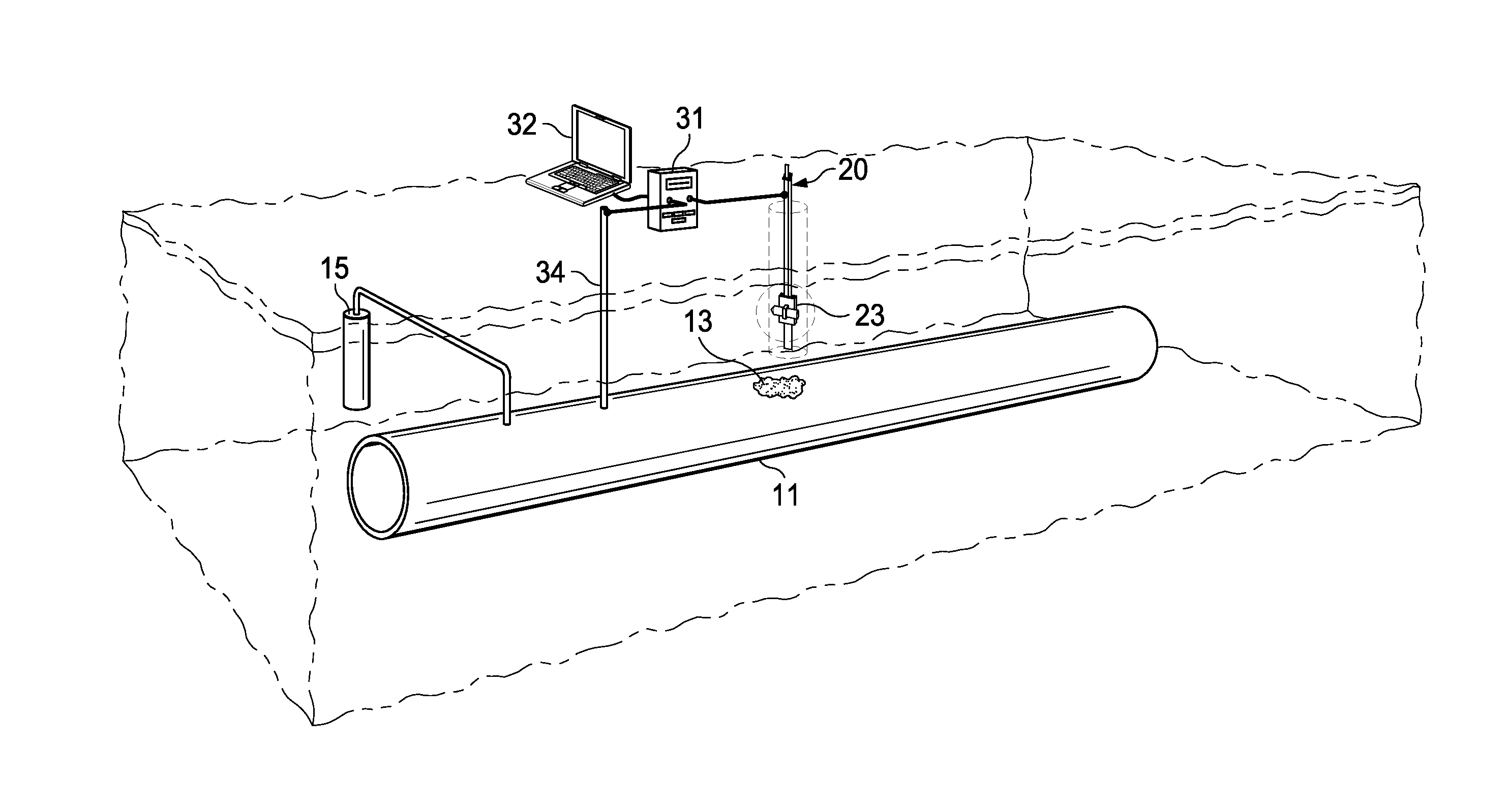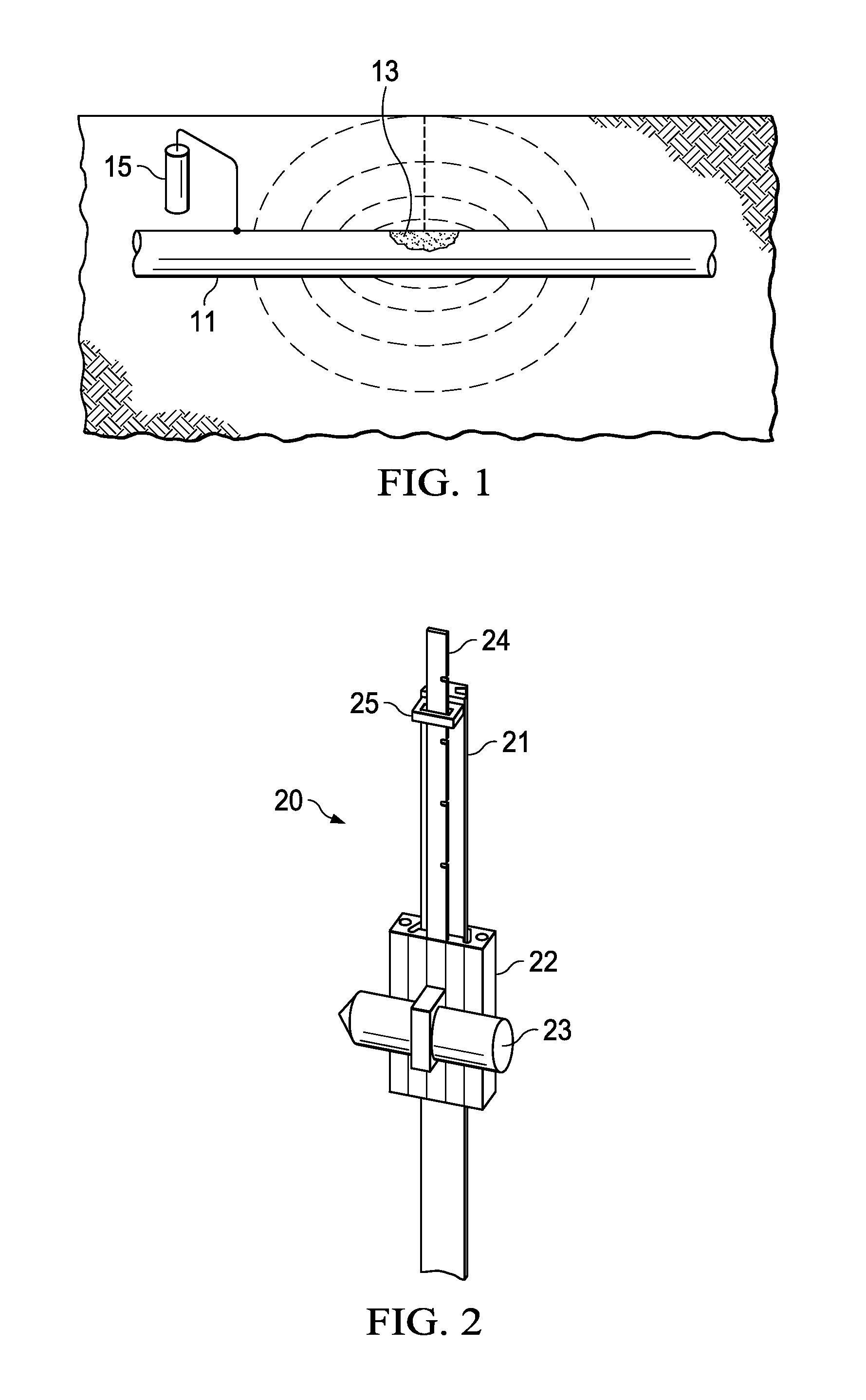Detection of Corrosion Defects in Buried Pipelines Using Vertically Measured Pipe-To-Soil Potential
a technology of corrosion defect and pipeline, applied in weather/light/corrosion resistance, instruments, material analysis, etc., can solve the problems of coating degradation and exfoliation, corrosion avoidance techniques of the day cannot prevent corrosion, and metal surface of pipeline exposed to soil
- Summary
- Abstract
- Description
- Claims
- Application Information
AI Technical Summary
Benefits of technology
Problems solved by technology
Method used
Image
Examples
Embodiment Construction
[0009]As stated in the Background, buried structures present particular problems for corrosion detection. Although the following description is in terms of detecting corrosion on a coated surface of a pipeline, the same concepts can be applied to detecting corrosion defects in any corrodible buried structure. The “corrodible” characteristic of the pipeline or buried structure means that at least a portion of its surface area is susceptible to metallic corrosion. The structure may be coated or uncoated, with “coated” referring to having paint or other covering material designed to protect the structure against corrosion.
[0010]The pipeline (or other structure) is assumed to be buried in soil. The term “soil” is used in a most general sense to mean any covering material, typically earth having some degree of moisture.
[0011]The following description is directed to in-situ corrosion rate estimation using vertically measured pipe-to-soil potentials over a buried pipeline under cathodic pr...
PUM
| Property | Measurement | Unit |
|---|---|---|
| diameter | aaaaa | aaaaa |
| corrosion rate | aaaaa | aaaaa |
| electric potential | aaaaa | aaaaa |
Abstract
Description
Claims
Application Information
 Login to View More
Login to View More - R&D
- Intellectual Property
- Life Sciences
- Materials
- Tech Scout
- Unparalleled Data Quality
- Higher Quality Content
- 60% Fewer Hallucinations
Browse by: Latest US Patents, China's latest patents, Technical Efficacy Thesaurus, Application Domain, Technology Topic, Popular Technical Reports.
© 2025 PatSnap. All rights reserved.Legal|Privacy policy|Modern Slavery Act Transparency Statement|Sitemap|About US| Contact US: help@patsnap.com



